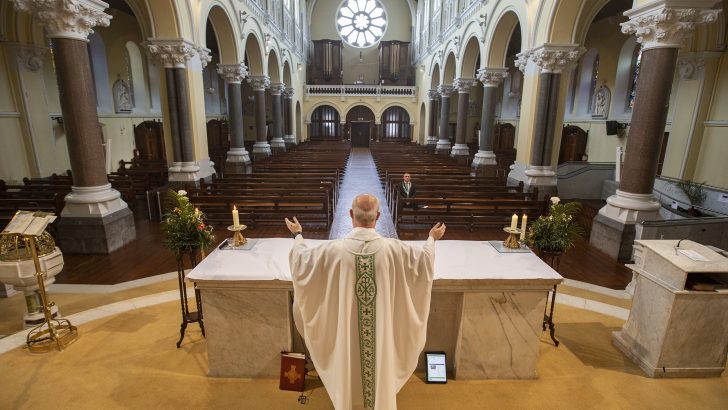Editorial Comment
It is almost two months since most Irish Catholics have been able to attend Mass. This is an unprecedented situation even in a land where the public worship of God by Catholics was forbidden and punishable by death.
Churches in the North remain closed by order of the civil authorities, while according to Government plans in the Republic it will be ten weeks before churches can re-open for Mass.
The closures are draconian and the timeframe of starting public Masses on July 20 lacks ambition. Public libraries, for example, are due to open on June 8 and restaurants are due to open on June 29.
Are we really to believe that churches must wait for weeks and weeks after libraries and restaurants for some semblance of normality to return? The answer is ‘no’ and Church leaders must lobby the Government for a timeframe that is realistic, ambitious and keeps public health to the fore.
A swifter return to public worship can be achieved if there is the will. It is not appropriate to leave this entirely in the hands of well-meaning public officials many of whom may be unfamiliar with the patterns of liturgy and Church life.
Well being
We need a credible roadmap of our own to present to the civil authorities to show how a return to public Masses can be achieved while minimising the risk to health and wellbeing. We need active planning for a strategy that would allow for a safe and gradual return to public Mass.
As other restrictions start to ease, we need to start having Masses with small groups of people where social distancing can be observed and facilities for hand hygiene are available. In a large church constructed to hold 1,000 people, for example, surely it is possible to have Mass for 50 people?
-The dispensation of the obligation of attending Sunday Mass could continue while people could be invited to attend Mass by townland, station area or street for example. This would not necessarily be a Sunday Mass and a creative way would have to be found for allocating places such as making a reservation via the parish office.
-On the day of the Mass for which a parishioner has a reservation, only one door could be opened in the church and the sacristan or a member of the parish council observing social distancing could have a list of those due to attend.
-Particularly in larger churches, spots could be marked on the pews where the number of people permitted should stand and sit ensuring that these are two metres apart. This will make sanitising after Mass easier.
-Parishioners should not move around the church or spend time at shrines or side altars to minimise contact.
-All persons attending Mass or any other liturgical function in the church would wear a mask or a tight scarf covering the nose and mouth area for the protection of everyone around them.
-It may not be prudent to have the distribution of Holy Communion at Mass and the tradition of a spiritual Communion while attending the actual Mass could continue.
There is no human activity which is completely free of all risk. This is true whether there is a pandemic or not. All of us should act prudently for the good of our own health and – in particular – for the good of the health of those with underlying conditions or who may be more vulnerable.
Unless there is a credible plan for a return to public Masses, the civil authorities on both sides of the border will be content to leave it to one of the last things.
Every other section of society is preparing plans to present for their phased reopening such as bars, restaurants and places of work. Before this pandemic, about two million people on the island of Ireland attended church every week. Their needs and the emotional, spiritual and physical benefits of gathering together for the worship of God should not be relegated to an afterthought.


